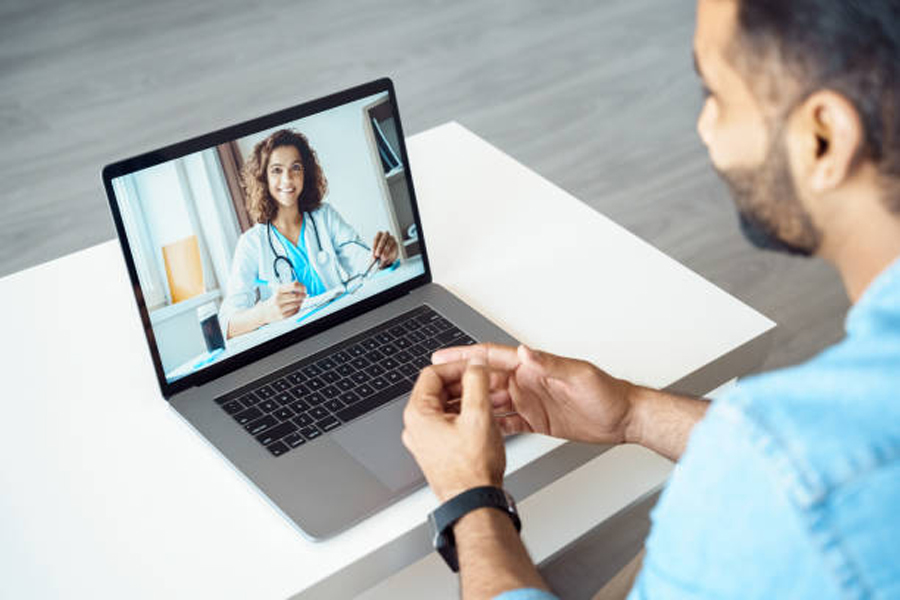
Remote patient monitoring has been increasing in popularity as healthcare providers strive to find more efficient and effective ways to provide care for their patients. There are many different types of remote patient monitoring systems available, and each has its own set of features and benefits. However, all remote patient monitoring systems share one common goal: to improve patient care by providing real-time data that can be used to make informed decisions about a patient’s health.
This innovative technology has many benefits for both patients and health care providers, and in this article, we’ll explore 11 of the most well-known ones. So, without further ado, let’s begin!
1. Increased Patient Engagement
One of the main benefits of remote patient monitoring is that it increases patient engagement. When patients are more engaged in their own care, they are more likely to follow treatment plans and make healthy lifestyle choices. This is because they feel more invested in their own well-being and have a better understanding of their condition.
2. Improved Patient Outcomes
Another advantage of remote patient monitoring is that it has been shown to improve patient outcomes. Studies have shown that people who use remote patient monitoring devices are more likely to experience better health outcomes than those who don’t. This is probably due to the fact that these patients are more engaged in their own care and are able to receive timely feedback from their healthcare providers.
3. Reduced Hospitalizations
Remote patient monitoring can also help to reduce hospitalizations. This is because the data collected by these devices can be used to identify potential health problems early on. This allows healthcare providers to intervene before the problem becomes more serious and requires hospitalization.
4. Lower Healthcare Costs
One of the most attractive advantages of remote patient monitoring is that it has the potential to lower healthcare costs. This is because hospitalizations and other traditional forms of care are often very expensive. By using remote patient monitoring to identify and treat health problems early on, healthcare providers can avoid these costly interventions.
5. Increased Access to Care
Another outstanding benefit of remote patient monitoring is that it increases access to care. This is especially important for patients who live in rural areas or who have difficulty traveling to see a healthcare provider. With remote patient monitoring, these patients can receive the care they need without having to travel long distances.
6. Improved Communication Between Patients and Healthcare Providers
One of the most important benefits of remote patient monitoring is that it can improve communication between patients and healthcare providers. This is because these devices allow for two-way communication. This means that patients can not only receive information from their healthcare providers but can also provide feedback.
7. Increased Efficiency in Patient Care
Another advantage of remote patient monitoring is that it can increase efficiency in patient care. This is because these devices often provide real-time data that can be used to make informed decisions about a patient’s health. This gives healthcare providers the opportunity to spend less time on tasks such as charting and more time caring for their patients.
8. Enhanced Safety for Patients
One of the most vital benefits of remote patient monitoring is that it can help to enhance safety for patients. When used correctly, these devices can help to prevent dangerous situations from occurring. For example, if a patient with a heart condition is being monitored, their healthcare provider will be alerted if their heart rate drops below a certain level and will be able to take action to prevent a heart attack.
9. Improved Quality of Life
Another vital benefit of remote patient monitoring is that it can improve quality of life. This is because these devices often provide patients with information that they can use to make informed decisions about their health. This allows them to live healthier lives and avoid the need for expensive and invasive treatments.
10. Increased Patient Satisfaction
Those who use remote patient monitoring devices are often more satisfied with their care than those who do not. This is because they feel more engaged in their own care and are able to receive timely feedback from their healthcare providers. This increased satisfaction can lead to better health outcomes and lower healthcare costs.
11. Improved Quality of Data
Another great advantage of remote patient monitoring is that it often provides healthcare providers with higher quality data than traditional methods of care. This is because these devices are able to collect a variety of data points, which can be used to more accurately evaluate a patient’s health. This improved data can lead to better decision-making and enhanced care for patients.
Live a Healthy Life
RPMS has revolutionized the healthcare industry by giving patients more power over their own health. These devices have a wide range of benefits that can improve the quality of life for patients and lower healthcare costs. If you are considering RPMS for your own health, be sure to speak with your doctor to see if it is right for you. With the many benefits that RPMS provides, it is likely that this technology will increase in popularity in the years to come!
Comments
comments